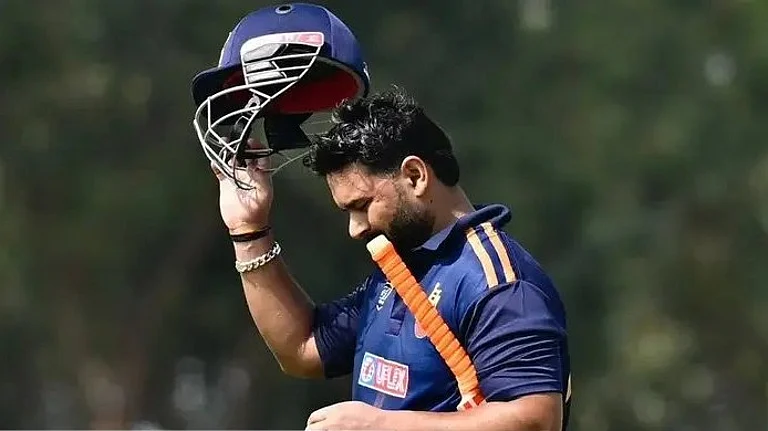When describing Australian pitches, words like ‘fast’ and ‘bounce’ are used often. (More Cricket News)
Rightly so.
The reason behind the pitches having such attributes is that they contain over 50 per cent of clay. Soil content, on the other hand, is kept to a minimal. Clay eventually becomes hard and due to its gradual dryness, the ball extracts pace and bounce after hitting the surface.
Furthermore, owing to humidity, the Kookaburra – the ball being used the ongoing ICC T20 World Cup 2022 – keeps its direction upon being released from the bowler’s hand. It does not produce as much swing, except when it’s new.
The Australian heat too has an impact on the surfaces. Exposure to the sun results in cracks on the pitch, making batting difficult, especially for visiting teams.
A modern-day great like Mitchell Johnson perfectly exploited the conditions, and in doing so, as Glenn McGrath said, grew from dangerous to lethal. Who can forget the 2013-14 Ashes series where Johnson terrorised the English batters?
The left-arm seamer, who was making a comeback into the national side, captured 37 scalps. He demolished his English opponents. They cracked not just externally, but their confidence was destroyed. And Johnson did all this while sporting a Fu Manchu.
Jonathan Trott, Johnson’s most obvious prey on that tour and in preceding matches between the two teams, suffered a nervous breakdown during the series and left early for home. He called Johnson his “executioner”. Some of the other Aussies, Trott said, who knew he was struggling mentally, were like a “pack of hyenas around a dying zebra.”
Another factor that makes countries envy Australian pitches is their diversity. All grounds, barring the Adelaide Oval and the Gabba, possess distinct qualities, depriving batters the chance to adjust to a single environment. The WACA turf, especially, has offered great support to fast bowlers, even though some feel it’s not as venomous as it used to be.
Adapting to local conditions has never been easy for travelling teams. A player of Sachin Tendulkar’s calibre could shed some light about his journey of playing in conditions Down Under, which were vastly dissimilar to those in the Asian subcontinent.
Discipline-wise, Tendulkar’s most memorable performance came at the Sydney Cricket Ground during the 2003-04 series, which saw the master register his then highest score, 241 not out, in Tests. Tendulkar had been struggling with the bat and had not scored a century in 13 innings.
Batting as India’s No. 4 at the time, Tendulkar arrived at the conclusion that he was getting out to deliveries outside the off stump. So, he thought it best to not tinker with the ball outside the line of the stumps and did not play a single cover-drive in that innings.
“I realised I needed discipline to be in the driving seat. My natural instincts, they had to be sitting in the passenger seat. My discipline, come what may, even if I was batting on 70 or 120, I was always going to have discipline in my driver's seat”, Tendulkar said in an interview.
Fast forward to 2018, when Brett Sipthorpe was the WACA (Western Australia Cricket Association, Perth) head curator during India’s tour of Australia in late 2018. Virat Kohli’s India were coming in hot after their win in Adelaide in the first Test. When Sipthorpe unveiled the pitch on the eve of the Perth Test, no one was surprised – a bright, lush green wicket it was.
Alongside clay, grass is another ingredient that makes the WACA lightning quick for the bowlers. "We've just been told make it fast, make it bouncy if you can and run with it. We're just trying to produce the bounciest pitch we can," Sipthorpe said.
Kohli, in peak form, scored 123 and 17 in India’s loss by 146 runs. And yet, it was a spinner, Nathan Lyon (8/106), who sealed India’s fate. India played four seamers, whereas Australia fielded three seamers and Lyon.
In hindsight, were the curator’s words a ploy by the curator and Australia to prevent Kohli from playing an extra batsman or a spinner? One could drone on with theories, but the dominance of seam did take a backseat in that Test.
Curtly Ambrose is another great who offered an insight into the personality of Australian tracks. The West Indian once took an unheard of seven wickets for one run in a space of 32 balls in the Perth Test of the 1992/93 series, before finishing with 7/25.
“I guess I got lucky a few times. Growing up we heard about the WACA and how bouncy and fast it is. But when I came to Australia the first time back in 1988-89, I quickly realised that if you bowl in good areas, you will be successful,” Ambrose said, reliving his most devastating bowling performance.
Australian pitches today may have been adjusted to meet modern-day requirements. Nonetheless, their overall character remains the same. Only those will succeed who will watch, learn and be open to tweaking their game.


























